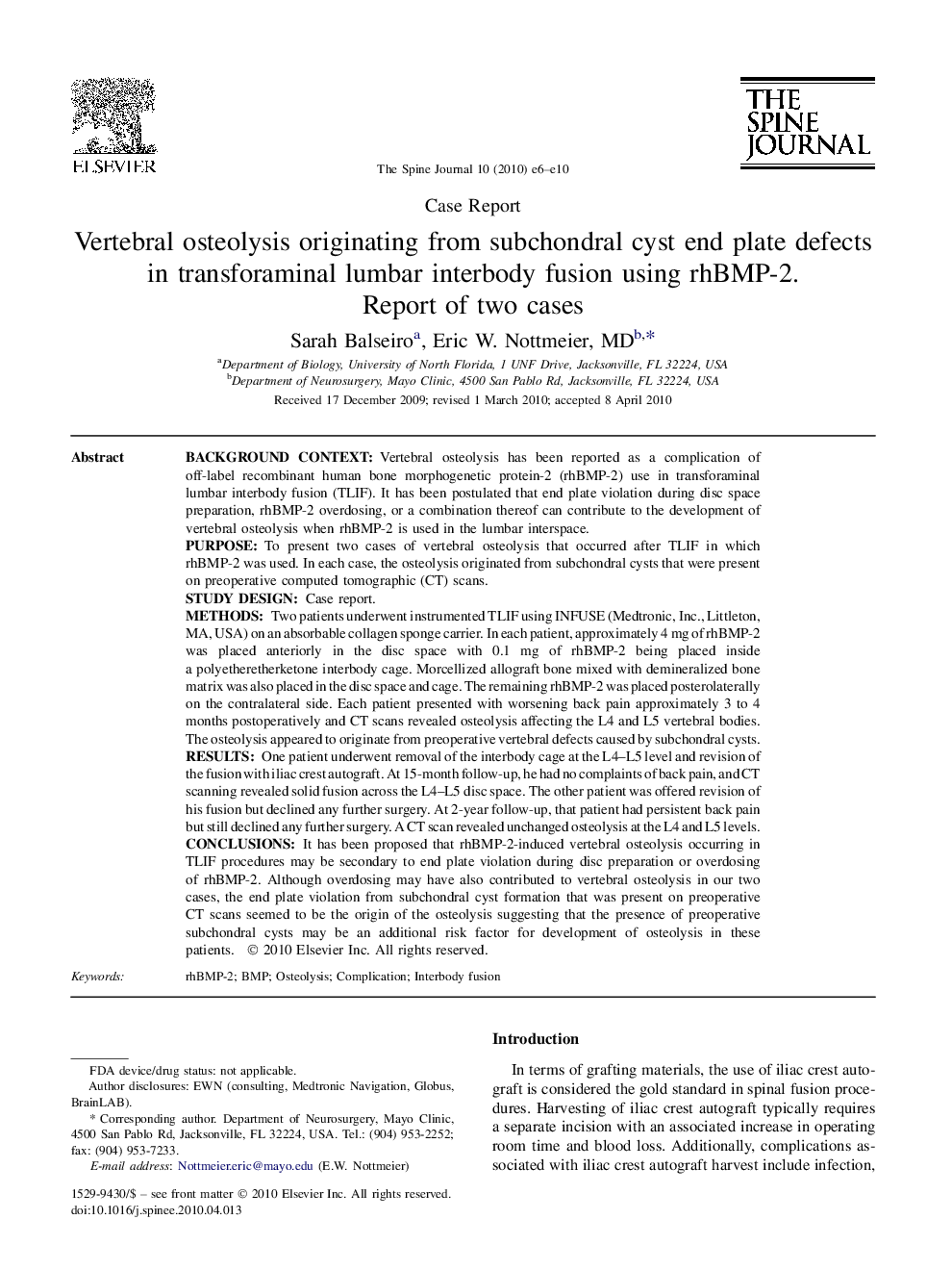| کد مقاله | کد نشریه | سال انتشار | مقاله انگلیسی | نسخه تمام متن |
|---|---|---|---|---|
| 4099577 | 1268644 | 2010 | 5 صفحه PDF | دانلود رایگان |

Background ContextVertebral osteolysis has been reported as a complication of off-label recombinant human bone morphogenetic protein-2 (rhBMP-2) use in transforaminal lumbar interbody fusion (TLIF). It has been postulated that end plate violation during disc space preparation, rhBMP-2 overdosing, or a combination thereof can contribute to the development of vertebral osteolysis when rhBMP-2 is used in the lumbar interspace.PurposeTo present two cases of vertebral osteolysis that occurred after TLIF in which rhBMP-2 was used. In each case, the osteolysis originated from subchondral cysts that were present on preoperative computed tomographic (CT) scans.Study DesignCase report.MethodsTwo patients underwent instrumented TLIF using INFUSE (Medtronic, Inc., Littleton, MA, USA) on an absorbable collagen sponge carrier. In each patient, approximately 4 mg of rhBMP-2 was placed anteriorly in the disc space with 0.1 mg of rhBMP-2 being placed inside a polyetheretherketone interbody cage. Morcellized allograft bone mixed with demineralized bone matrix was also placed in the disc space and cage. The remaining rhBMP-2 was placed posterolaterally on the contralateral side. Each patient presented with worsening back pain approximately 3 to 4 months postoperatively and CT scans revealed osteolysis affecting the L4 and L5 vertebral bodies. The osteolysis appeared to originate from preoperative vertebral defects caused by subchondral cysts.ResultsOne patient underwent removal of the interbody cage at the L4–L5 level and revision of the fusion with iliac crest autograft. At 15-month follow-up, he had no complaints of back pain, and CT scanning revealed solid fusion across the L4–L5 disc space. The other patient was offered revision of his fusion but declined any further surgery. At 2-year follow-up, that patient had persistent back pain but still declined any further surgery. A CT scan revealed unchanged osteolysis at the L4 and L5 levels.ConclusionsIt has been proposed that rhBMP-2-induced vertebral osteolysis occurring in TLIF procedures may be secondary to end plate violation during disc preparation or overdosing of rhBMP-2. Although overdosing may have also contributed to vertebral osteolysis in our two cases, the end plate violation from subchondral cyst formation that was present on preoperative CT scans seemed to be the origin of the osteolysis suggesting that the presence of preoperative subchondral cysts may be an additional risk factor for development of osteolysis in these patients.
Journal: The Spine Journal - Volume 10, Issue 7, July 2010, Pages e6–e10